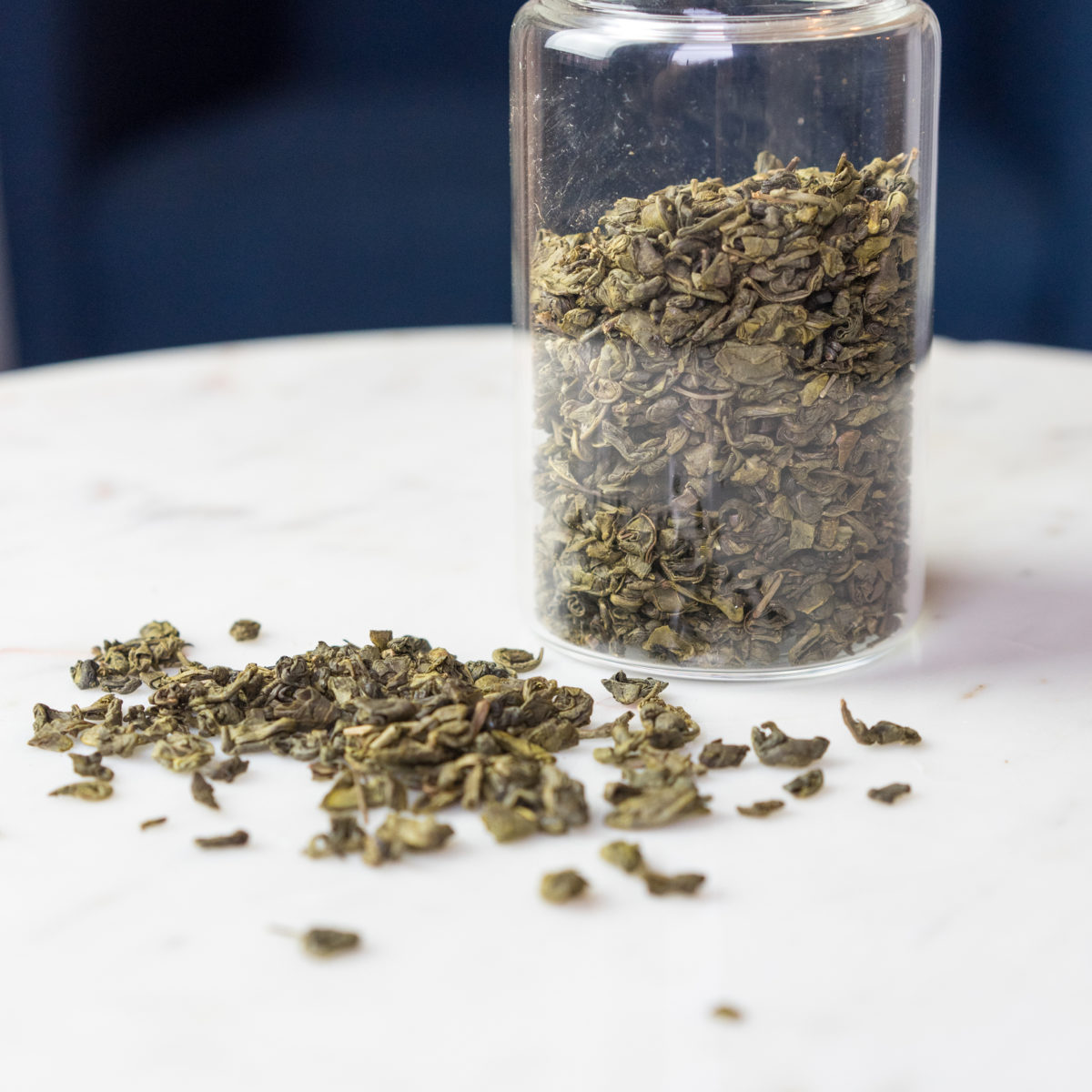
COMMON NAME (Chinese Name)
Green Tea (Chá Shù)
BOTANICAL NAME
Camellia sinensis
USES
Hot water decoctions and infusions help render some valuable compounds from the unoxidized leaves of tea plants. These compounds have some significant, proven effects, like antibacterial, anti-aging, cardioprotective, and anticaries/anticavity activity. What’s more, even when ingested regularly and in high/concentrated doses, green tea has demonstrated no significant toxicity to the kidney or liver. This can be especially helpful given the potential anti-infective effects of green tea extracts, as they may help treat and prevent the spread of certain infectious diseases among people who are unable to access or safely take antibiotics due to liver injury. Additionally, aqueous green tea decoctions have some significant impacts on dental and periodontal health, effectively supporting the treatment of bad breath while also decreasing the instance of oral cancer and tooth decay.
Aside from hot-water teas: Green tea extracts (whether taken orally or used topically) may also help prevent photoaging of the skin caused by sun exposure. Additionally, green tea seed oil has some powerful antioxidant properties. Consequently, it may also have beneficial topical anti-aging applications, and has known beneficial oral uses as a food supplement (and an alternative to less-healthful cooking seed oils).
Green tea is classified in Chinese medicine as an herb that drains damp heat. It is considered cold, bitter, and sweet and affects the Heart, Kidney, Liver, Spleen and Stomach channels.
PREPARATION & ADMINISTRATION
Green tea does not come from a unique plant that is separate from black, white, or oolong tea plants. Rather, all these different kinds of tea come from the same plant (Camellia sinensis), as does kukicha (twig tea). Green tea (the drink) is a hot water decoction or infusion made using just the young leaves and leaf buds of the tea plant. Different from other teas, green tea is made with leaves that have been specially processed to prevent oxidation before decoction. These leaves can then either be processed as a hot-water decoction/infusion (as a tea) or extracted using ethanol-based processes. Both teas and extracts can be (and are regularly) used orally and topically.
PRECAUTIONS
Hot water decoctions of green tea leaves have shown some promise for mediating blood glucose levels, though you should consult with a certified herbalist, physician or other qualified healthcare professional before taking green tea. People with diabetes or who are prediabetic (or who have other metabolic conditions impacting blood sugar) should make sure to bring this us when consulting their physician before drinking green tea or taking green tea supplements. What’s more, green tea extracts, oils, and teas contain caffeine and may have diuretic effects. People who are sensitive to, prohibited from ingesting, or already taking medications that have these effects should make special note to discuss this with their physician. In tea form the herb is quite safe. However excessive use of green tea supplements can give side effects that range from mild to serious and include headache, nervousness, sleep problems, vomiting, diarrhea, irritability, irregular heartbeat, tremor, heartburn, dizziness, ringing in the ears, convulsions, and confusion.
REFERENCES
Arab, et al. “Review of The Therapeutic Effects of Camellia Sinensis (Green Tea) on Oral and Periodontal Health .” Journal of Medicinal Plants Research , vol. 5, no. 23, 2011.
Hempen, Carl-Hermann, and Toni Fischer. A Materia Medica for Chinese Medicine: Plants, Minerals, and Animal Products. Churchill Livingstone, 2009.
Namita, et al. “Camellia Sinensis (Green Tea): A Review.” Global Journal of Pharmacology, vol. 6, no. 2, 2012.
Padmini, et al. “Comparative Analysis of Chemical Composition and Antibacterial Activities of and Mentha Spicata Camellia Sinensis.” Asian Journal of Experimental Biological Sciences, vol. 1, no. 4, 2010.
Sharangi, Amit. (2009). Medicinal and therapeutic potentialities of tea (Camellia sinensis L.) – A review. Food Research International. 42. 529-535. 10.1016/j.foodres.2009.01.007.
Tariq, Mahmood, et al. “The Morphology, Characteristics, and Medicinal Properties of Camellia Sinensis Tea.” Journal of Medicinal Plants Research, vol. 4, no. 19, Apr. 2010, pp. 2028–2033., doi:10.5897/jmpr10.010.
Wang, Yuefei, et al. “Fatty Acid Composition and Antioxidant Activity of Tea (Camellia Sinensis L.) Seed Oil Extracted by Optimized Supercritical Carbon Dioxide.” International Journal of Molecular Sciences, vol. 12, no. 11, Aug. 2011, pp. 7708–7719., doi:10.3390/ijms12117708.
